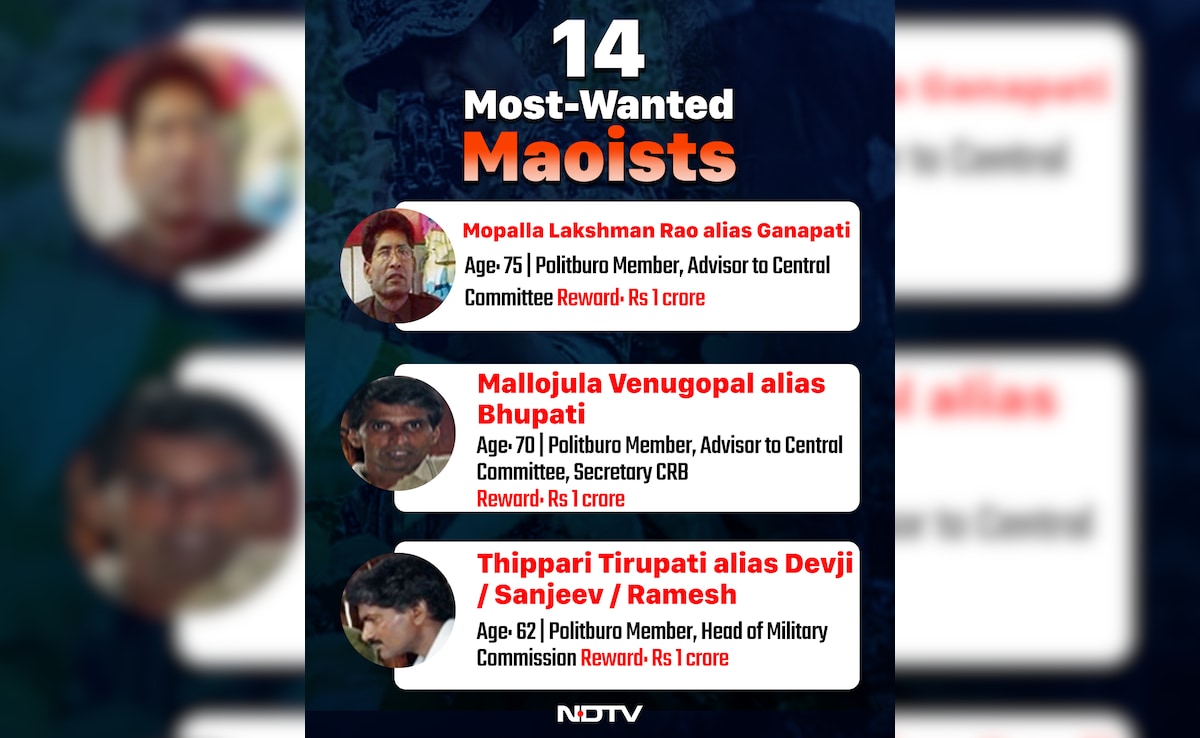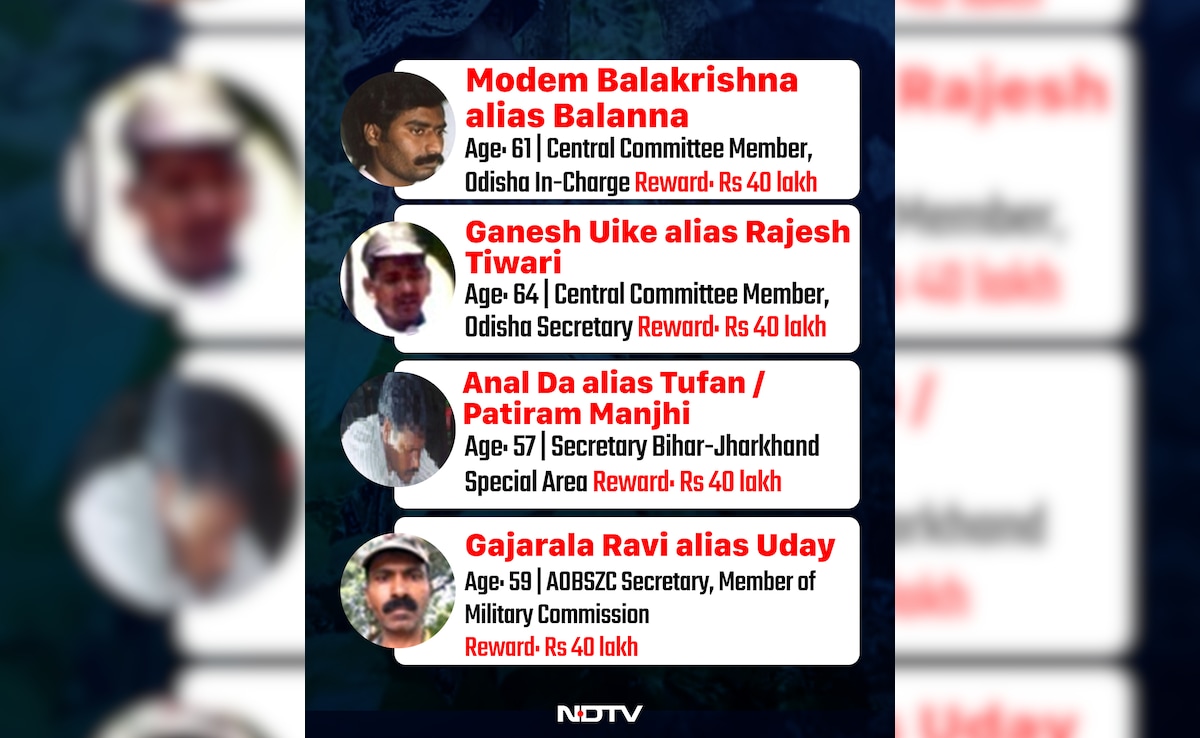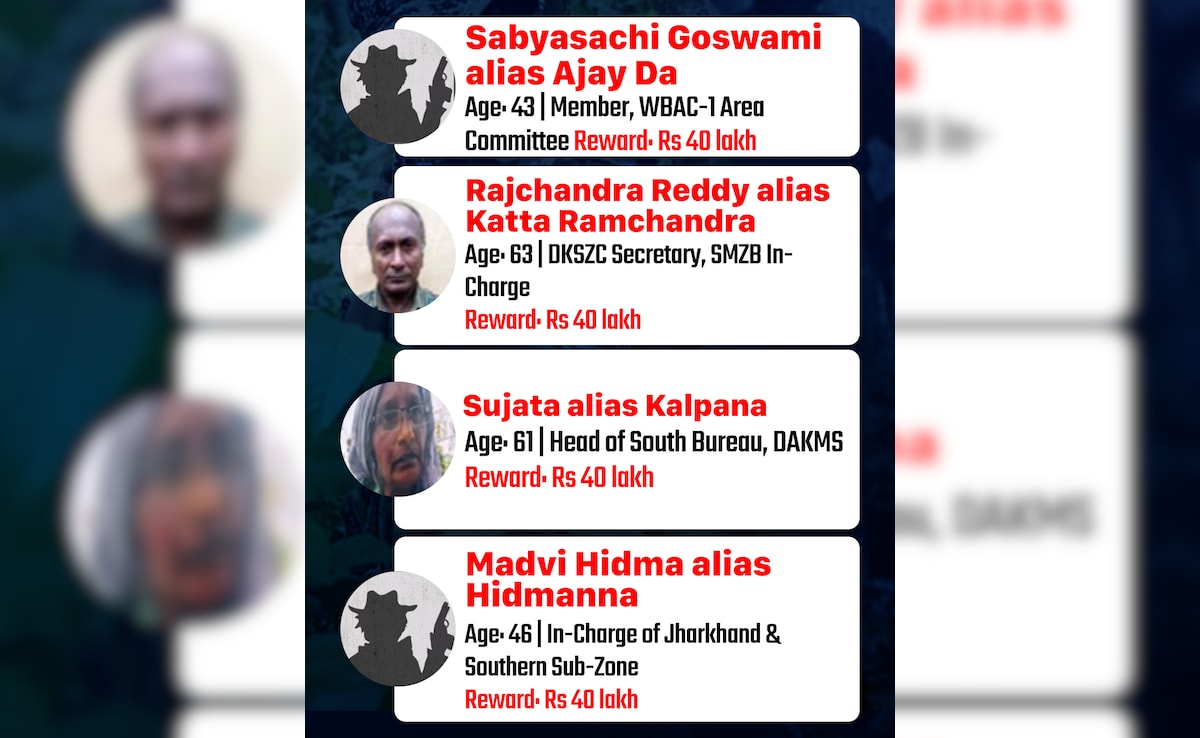
The death of Basavaraju, the elusive supremo of the CPI (Maoist), in a high-stakes anti-Naxal operation deep in the jungles of Abujhmad on May 21, marked what authorities describe as a decisive turning point in India's war against Left-Wing Extremism.
The operation, led by the District Reserve Guard (DRG), has not only struck at the heart of Maoist leadership but also triggered a sweeping reassessment of the movement's remaining strength.
But this was not just the end of a most-wanted rebel's journey - it was the beginning of what security agencies now term "the final chapter" in the country's decades-long Maoist insurgency.
"This was not just another encounter. This was the culmination of years of intelligence gathering, ground operations, and coordination between multiple agencies," said Sundarraj P, Inspector General of Police, Bastar Range. "The fall of Basavaraju is symbolic. It reflects how the topmost leadership of the Maoist movement is collapsing."
Yet, even as the government targets March 31 as the deadline to eradicate Naxalism from Indian soil, senior officers and ground personnel acknowledge the forest is not silent yet.
"The jungle still hides ghosts with guns," said a senior officer involved in the Bastar operations. In Bastar, there still exists a list- one that security forces grimly refer to as the "Dead and Danger Zone."
This is a list of India's Most Wanted Maoists-some of the most dangerous and secretive figures ever to have led an armed insurgency. Some from this list have been killed. Some are behind bars. But some are still breathing, still hiding, still holding their guns.
Here, in a first, is the complete list - names that were never made public together before. Names of those whose shadows still haunt Bastar and beyond.
1. Mopalla Lakshman Rao alias Ganapati
An ideological pillar of the Maoist movement, Ganapati remains one of the most senior and secretive figures in hiding.
2. Mallojula Venugopal alias Bhupati
Strategic and powerful, Bhupati is believed to be among the few still capable of reorganising scattered cadres.
3. Thippari Tirupati alias Devji / Sanjeev / Ramesh
The man is allegedly behind some of the most lethal attacks. A ghost in the jungle, and a top priority for security forces.

4. Mishir Besra alias Bhaskar
He handles communications and propaganda. His ideological influence continues despite setbacks.
5. Kadri Satya Narayan Reddy alias Kosa
He is one of the most experienced strategists in the group, operating across multiple zones.
6. Pullari Prasad Rao alias Chandanna

7. Modem Balakrishna alias Balanna
8. Ganesh Uike alias Rajesh Tiwari
9. Anal Da alias Tufan / Patiram Manjhi
10. Gajarala Ravi alias Uday

11. Sabyasachi Goswami alias Ajay Da
12. Rajchandra Reddy alias Katta Ramchandra
13. Sujata alias Kalpana
14. Thentu Lakshmi alias Narasimha Chalam
15. Madvi Hidma alias Hidmanna
An accused in multiple deadly ambushes, including the 2021 Sukma attack, Hidmanna is possibly the most feared name in Bastar today.

In a candid conversation, Sundarraj P, Inspector General of Police (Bastar Range), told NDTV: "We have neutralised more than 50 per cent of the CPI (Maoist)'s top leadership. We're tracking 15 more top operatives. Many of them are old, fatigued, and some are thinking about surrendering... Our appeal to them is clear-come back to the mainstream. This war doesn't have to end with death."
A Movement in Decline, A Leadership in Crisis
In the last three years, the CPI (Maoist) has witnessed a sustained and systematic targeting of its top leadership. The police confirm that more than 50 per cent of the Maoist central command has been either killed or captured.
In the last 17 months alone, over 400 Maoists have been killed in anti-Naxal operations across Chhattisgarh and neighbouring regions. But the real story begins where the fight gets personal - with the elimination of those who once held the reins of the red terror.
Sundarraj P, who leads anti-Maoist operations in Bastar, shared details of what is being described as the most decisive phase in the history of the movement: "In recent years, CPI (Maoist) Central Committee member Deepak Teltumbde was eliminated in Gadchiroli, Maharashtra. In Chhattisgarh's Gariaband, we recovered the body of Chalapathi. On May 21, a landmark operation was carried out in Abujhmad, where we killed the top Maoist commander Basavaraju. In Jharkhand, Prashant, a Politburo member, was arrested. His wife Sheila, also a Central Committee member, was caught shortly after. Four Central Committee members - Ramanna, Ramakrishna, Haribhushan, and Sudarshan - died in South Bastar at different times. And in Jharkhand, we recovered the body of Arvind ji, another key leader, who died due to illness."
These names were once the core of the CPI (Maoist)'s leadership - mentors, strategists, commanders.
For the first time in the history of Naxal operations, security forces have successfully eliminated 8 out of the top 10 Maoist leaders. The remaining two? Captured alive. This is being hailed as the most significant blow ever dealt to the Maoist structure.
But even in this moment of victory, the war is far from over. More than 15 high-ranking Maoist leaders are still at large. They continue to hide in forests.
And at any given moment-they could emerge. Guns blazing. They are the remnants of an ideology under siege - waiting for their final confrontation.
What makes this conflict different is that it is not just a war of weapons. It is a war of terrain, patience, and silence. The Maoist strategy has always thrived on secrecy, local support, and the wilderness.
The government, in turn, has responded with better tech, improved intel, and most importantly, coordination between states. Operations like the one in Abujhmad, which killed Basavaraju, are products of years of human intelligence and tactical planning.
Inside Abujhmad: The Theatre of the Final War
The operation that killed Basavaraju took place in Gunde Kot, a remote village in Abujhmad-one of India's most impenetrable and poorly mapped forest zones. In this region, state presence is minimal, and basic infrastructure like roads, schools, and health centres is still absent in many parts. Local accounts paint a chilling picture of life under Maoist control. "Two years ago, Naxals came to our house," recalled Sarita, a young girl from Gunde Kot. "They saw we had six children. They told my parents, 'Give us one.' They took away my elder sister, Madko. They said if we refused, they would punish the whole village."
Such stories are common across Bastar, where the Maoist presence has often translated into decades of fear, deprivation, and forced recruitment.
Government Pushes Development, Seeks to Fill Vacuum
With the Maoist command structure crumbling, the Chhattisgarh government has intensified its efforts to bring development to areas that were long under rebel influence.
"We are determined to change the narrative," said Deputy Chief Minister Vijay Sharma. "We are building schools in areas that never saw classrooms, setting up forest produce centers to provide income to tribal families, and converting old Maoist camps into training hubs and livelihood centres."
Officials claim that this developmental push is being strategically combined with a psychological outreach, where security forces interact directly with tribal communities, encouraging them to join village defence committees, forest cooperatives, and civil society initiatives.
The Road Ahead: Can the Guns Fall Silent?
With most top commanders either dead or behind bars, and local recruitment dipping drastically due to increased awareness and development, many security experts believe the Maoist movement is nearing its endgame. But there is caution in celebration. Officers on the ground say the CPI (Maoist) has a long history of resilience - of going silent, regrouping, and returning when least expected.
For now, the jungles of Bastar remain under watch -- by drones, patrols, and by hope. Hope that for the first time in decades, an entire generation of tribal children may grow up without having to march into the forest with a gun.
Track Latest News Live on NDTV.com and get news updates from India and around the world

